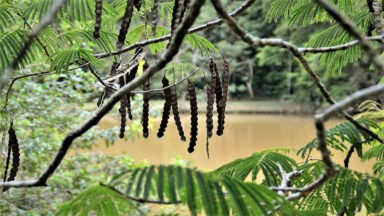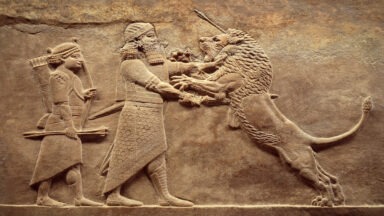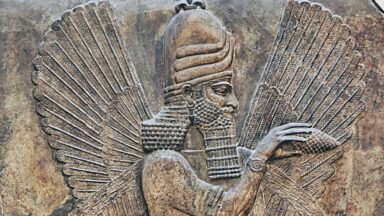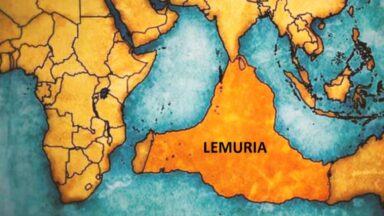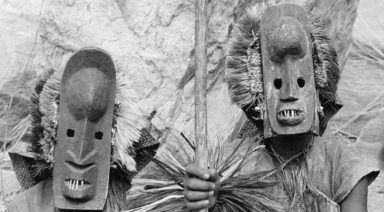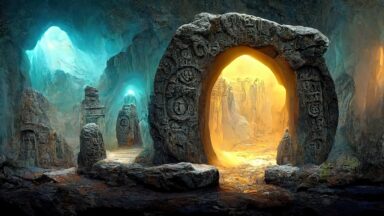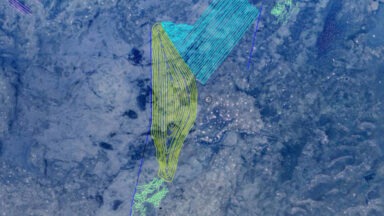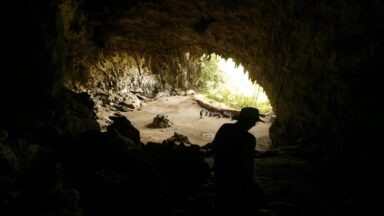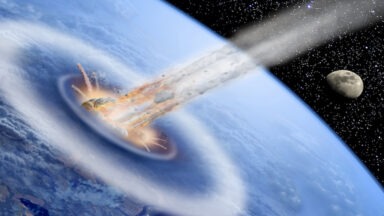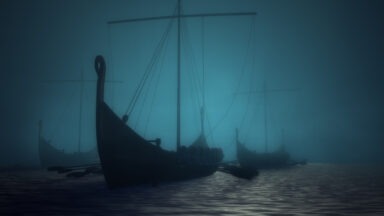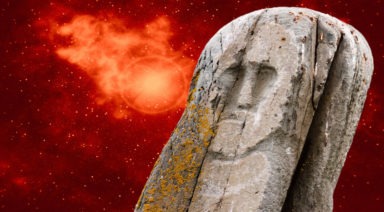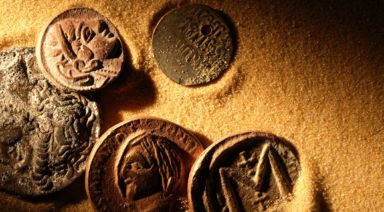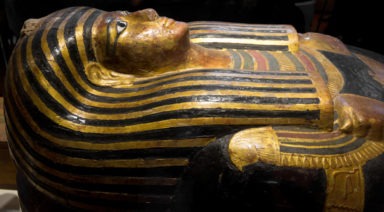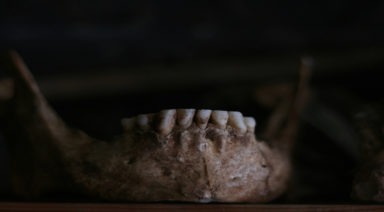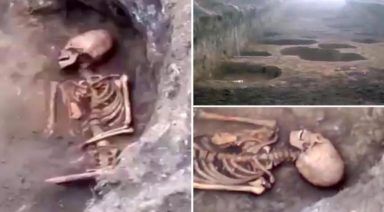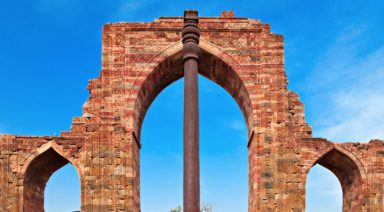Did The Druids Share a Common Ancestry With Other Ancient Civilizations?

There are few groups in history more enigmatic than those known as the druids. Today there are two neo-druidic sects, whose philosophy centers around a reverence for nature, diversity, and love. These are the often-cloaked people known to perform ceremonies in nature and at megalithic sites such as Stonehenge.
The Druids of antiquity are steeped in legend and folklore, having no written record of who they truly were or where they originally came from. The general consensus holds that they were a highly revered group, with a divine connection to nature and authoritative wisdom that trumped even the highest nobility. They are widely known to be of Celtic origin, but some alternative theories see them as having a common ancestry with ancient Eastern cultures or even one possibly originating in Atlantis.
Ancient Druids
In ancient times, Druids were known as wise elders who would congregate around oak trees. In fact, the word Druid or Druwid in Celtic translates to oak-knower or “knowing the oak tree,” though little is known what exactly this erudite group was really like. The recorded history of the ancient Druids typically falls into two categories; those that are based on ancient Roman writings, and those based on interpretations of writings seen as distorted Roman propaganda.
The Celtic Druids inhabited the area of Europe once known as Gaul, where they were eventually conquered by the Romans. One of the best-written accounts of the ancient Druids comes from Julius Caesar who described them as civilized, wise, and noble people, with the exception of their alleged ritual human sacrifice. Caesar and Tacitus led the conquering of Gaul and the subsequent persecution of the Druids, viewing them as overly superstitious and having dictatorial control over society.
The Druid religion was said to have sacrificed criminals in a massive wooden effigy, known as a wicker man, which was filled with people and set on fire. Caesar claimed that the Gauls were so consumed by the superstitions of Druidic rituals that they were quick to sacrifice, and would even offer up innocent people if they lacked sufficient criminals. Many contest this image of the Druids as inaccurate and an attempt by Caesar to depict them as a society worth integrating into Roman culture, albeit one that needed civilizing.

Unlike most religious and spiritual beliefs in Europe at the time, Druids believed in reincarnation. They believed our souls were immortal and could be reborn into different lifeforms. Druid religion believed there were two planes of existence; the world we experience now, and the “otherworld.” Some think the Druids believed our souls would live and die in this world and then live and die in the otherworld, trading lifetimes in a cyclical process.
Numerous schools trained noble youth to become Druids. Depending on which type of role one was trained in, the Druidic educational system could take up to 20 years, significant schooling when life expectancy didn’t extend much past the age of 40. Still, it was considered highly esteemed to become a Druid, and despite the patriarchal nature of that era, women were made Druidesses with equal roles to men. The Druids worshipped female goddesses and a Druidess could take part in a battle or divorce her husband.
There were three roles that a Druid-in-training could aspire to prophet, priest, or bard. At school, all lessons were taught and memorized through lore. Song, poetry, and storytelling were of utmost importance, as Druids kept no written record, instead encoding their teaching into folk tales. This is part of the reason bards were so necessary for Druidism, as their songs served not just as historical records, but were also thought to have magical powers including the ability to induce sleep, change moods, and even cause illness or death.
Modern Druids
Today, the practice of modern Druidism is alive and well in two different branches of neo-Druidism. The Druid Order was the most well-known contemporary society of modern Druids until the early ‘60s when a new order, known as the Order of Bards, Ovates and Druids (OBOD) was established. This division has since gained notoriety across the world, claiming a 20,000-person membership.
OBOD runs online mentorships, classes, and workshops to develop its three disciplines, described as a spiritual practice that speaks to creativity, nature and wisdom. The three categorizations of OBOD are alternatively described as the Singer, Shaman, and Sage.
The Druid Order is known for the ceremonies conducted at Stonehenge throughout the year during Solstices and Equinoxes. They have conducted these for over a century and look to the cycle of the seasons as a regulator and key to unlock inner harmony.
They see modern Druidic beliefs not as a religion, but more as a fraternity or esoteric society that accepts all religions. They also pride themselves in observing and minding their own business. Only when asked for advice will a member of the Druid Order give his opinion.

Druid Symbol of Awen
One of the basics of the Druidic beliefs is the idea of Awen or the divine inspiration. It is otherwise described as gnosis, or the intuitive wisdom derived from the practice of Druidism. It is thought to be unique in every individual and is described as poetic inspiration. Awen is used to describe the poetry used by bards to pass down the story of the Druids, and modern usage describes poets and musicians in the same way. The symbol of Awen is depicted by three rays representing harmony and universal balance.
Alternative Theories
Some theorize that the ancient Druids built Stonehenge, given their reverence for it, as well as other sacred monolithic sites. This idea was first posited by John Aubrey in 1640 and later perpetuated by William Stukeley. Though, theis theory has supposedly been discredited as radiocarbon dating showed the stones date back to 3,100 BC, while the known history of the Druids begins around 300 BC.
Still, there is no definitive proof or credible theory as to who built Stonehenge that has been widely accepted, leading some to believe that an ancient sect of Druids may have in fact, constructed the site. In more esoteric beliefs, an alleged group of ancient Druids from Atlantis are thought to have possibly constructed Stonehenge using some exotic, or anti-gravity technology.

Stonehenge in Britain
Merlin, the legendary wizard in Arthurian lore, is sometimes credited as being responsible for moving the 10- 20-ton stones transported hundreds of miles to build Stonehenge. But some believe Merlin to have been a Pheryllt druid, named Taliesin, having practiced magical alchemy or who possessed anti-gravity technology.
Pheryllt was an esoteric sect of Druidism sometimes alluded to by bards. Its eponymous, esoteric text, the Lost Book of the Pheryllt, is thought to detail a common origin between many of the major ancient civilizations. The Pheryllt were said to have arrived in Wales after the sinking of Atlantis and share many similarities in their beliefs with Eastern dharmic religions.
The connections between Druidism and Hinduism are particularly striking. One similarity is found in the Druid’s sacred Awen, which looks and sounds much like the Hindu word Aum — both words representing the primordial sound of the universe. The Pheryllt also spoke of a female goddess, Cerridwen, who shares many parallels with the Hindu goddess Kali. Cerridwen’s divine feminine energy is often referred to much like Kali’s Kundalini energy.
Could there have been a common Atlantean origin or ancestry between the Celtic Druids and other ancient Eastern cultures? Similarities in mythology aside, there are also many parallels in their belief systems, including reincarnation and cosmology. Interestingly, the root words for Druid, dru and vid, when translated in Sanskrit mean, “immersed in knowledge.” It has also been common for many modern Druids to feel a connection with the dharmic teachings of these Eastern religions, leading members of OBOD to actively study this connection.
An Ancient Psychedelic Brew & Metal Found in an Elongated Skull
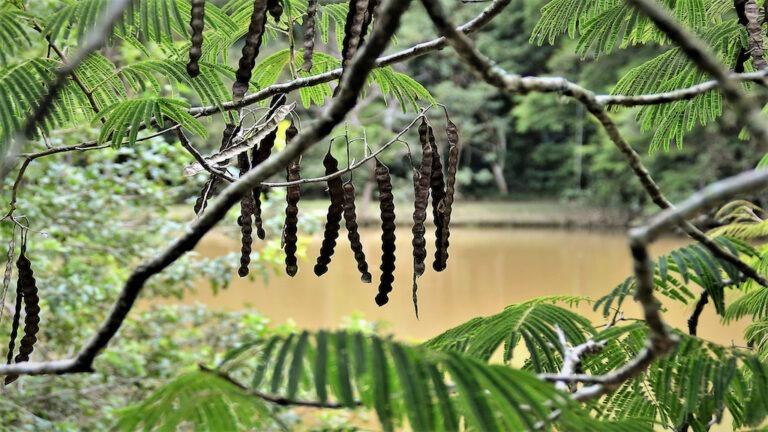
Did ancient Peruvian leaders use hallucinogens to keep their followers in line? And do an ancient elongated skull show evidence of an advanced metal surgical implant or is it just a hoax?
Archaeologists studying the Wari people in the southern Peruvian town of Quilcapampa have found hallucinogenic “vilca” seeds in a recent dig. Writing in the journal Antiquity, the researchers point out they found 16 vilca seeds in an ancient alcoholic drink called “Chicha de Molle,” in an area believed to be used for feasting.
The Wari people lived in this area from about 500 to 1,000 A.D. Their reverence for the psychotropic vilca seed has been found in images at other Wari sites, this is the first find of the actual seeds. What is particularly interesting to the archaeologists is the role of ancient hallucinogens and their influence on social interactions.
The vilca seeds would have come from tropical woodlands on the eastern side of the Andes, a complex trade network would have to be in place to even get them. And adding the vilca seeds with the alcoholic drink would increase the intensity of a psychedelic trip.
That trip would be seen as a journey to the spirit world, and Wari leaderships’ control over the substance led to control over their followers who wanted it. Researchers argue in their paper, “[T]he vilca-infused brew brought people together in a shared psychotropic experience while ensuring the privileged position of Wari leaders within the social hierarchy as the providers of the hallucinogen.”
Work continues at the dig site at Quilcapampa, and researchers plan to test where the ancient vilca seeds came from – so they can figure out the rest of the ancient trade routes.


